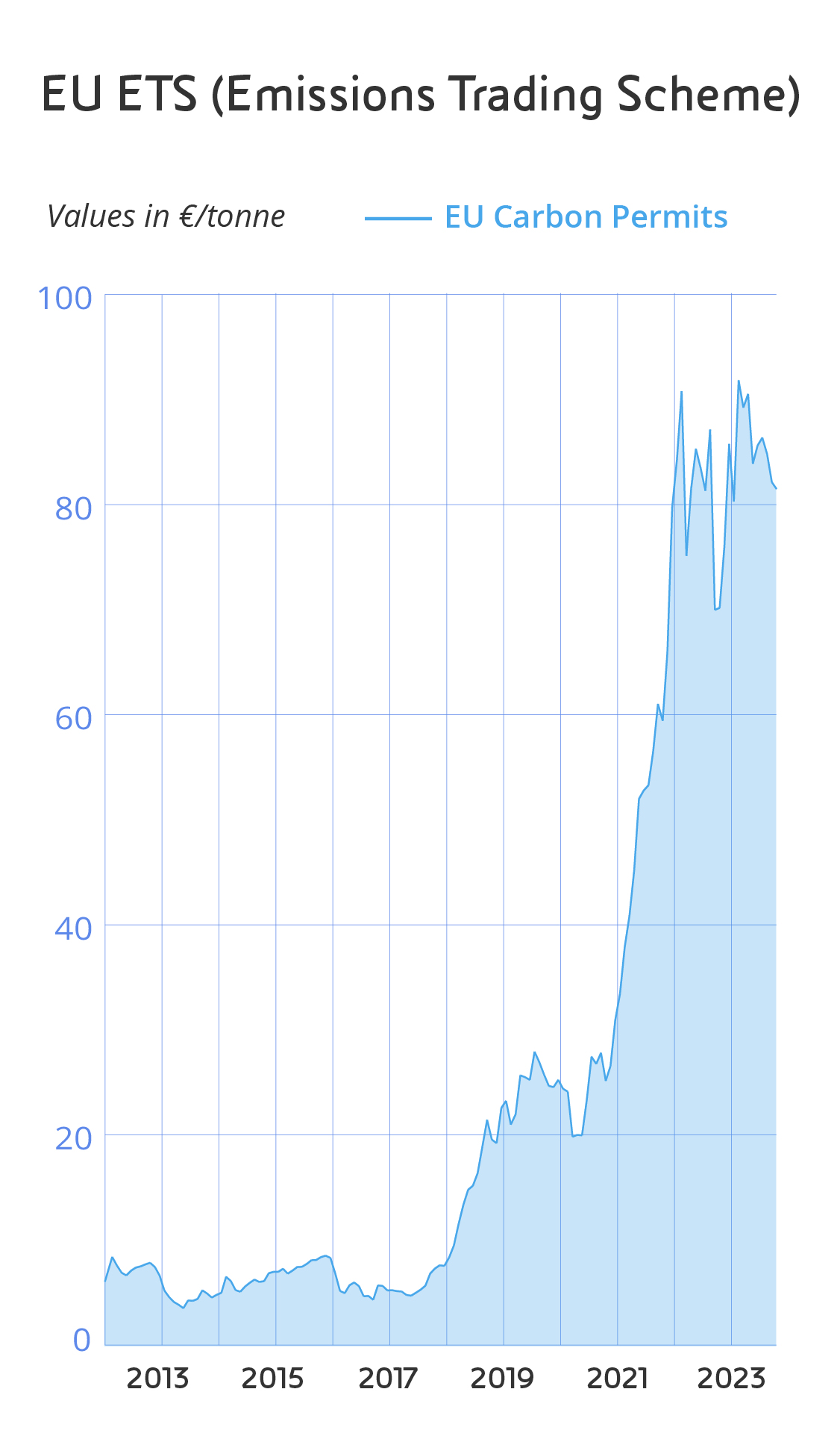
CCS projects can generate growth and development opportunities because they make industrial activities more competitive by reducing their CO2 emissions.

In an effort to encourage the reduction of climate-changing emissions, the European Union approved the European Union Emissions Trading Scheme (EU ETS) in 2009, a tax directly linked to the amount of greenhouse gases emitted by companies. Europe's approach is arguably the most sophisticated, but there are similar schemes either in operation or under consideration around the world. The common goal of such mechanisms is to motivate companies to invest in more sustainable processes or technologies to reduce emissions. However, the vast majority of countries around the world have yet to implement any form of emissions taxation. In terms of the ETS framework, the cost of carbon dioxide emissions has risen from €20 per tonne in 2020 to more than €80 per tonne in 2023. Over the coming decades, this rise will gain momentum as Europe intends to use the ETS system in its commitment to achieve carbon neutrality by 2050.

An unintended consequence of the ETS framework is the phenomenon known as “carbon leakage”, the potential for high-emitting industries to relocate their operations to countries with more lenient environmental standards. If this should happen, it could simultaneously nullify decarbonization efforts and threaten the economies of countries, such as those in Europe, that are committed to reducing emissions.
On 1 October 2023, the Carbon Border Adjustment Mechanism (CBAM) came into force in Europe. The CBAM will gradually ensure that the price of selected imports from outside Europe accurately reflects their carbon impact. The aim is to meet the EU's climate change commitments while maintaining the competitiveness of European companies.
Tackling climate change must go hand in hand with economic and social sustainability. Within the European framework, companies that are able to decarbonize will not have to pay ETS taxes for the emissions they successfully offset. This underlines the key benefit provided by CCUS, which is particularly relevant for hard-to-abate industries. Due to their intensive energy use and inherent production characteristics, these sectors (e.g. iron and steel, cement and brick production, chemicals and paper) have no possibility of using other emission reduction solutions of equivalent effectiveness. For this reason, the IEA's Net Zero to 2050 scenario assumes that by 2050, 80% of cement, 60% of chemical products and 50% of primary steel will have to be produced using emission capture technologies.
CCS makes it possible to reduce emissions from hard-to-abate industries, keeping companies competitive and reducing the risk of relocation.
operating in hard-to-abate sectors in Italy
in hard-to-abate sectors in Italy
cost per tonne of CO2 in the ETS (Emission Trading System) framework in 2020
cost per tonne of CO2 in the ETS (Emission Trading System) framework in 2023
Carbon capture and storage (CCS) is currently one of the most cost-effective methods of industrial decarbonization, in terms of cost per tonne of emissions avoided. This is underscored not only by technical and scientific publications, but also by the initiatives that are being developed worldwide, with Europe at the forefront. In the Netherlands, for example, CCS has been identified as one of the two most cost-competitive measures evaluated for the distribution of SDE++ environmental grants in 2021 and 2023, which cover the full range of decarbonization technologies, including renewables, electrification and biofuels.
The Ravenna CCS project will avoid more 16 million tonnes of CO2 per year (Mtpa) at very competitive costs. Thanks to their increasing efficiency and financial sustainability, projects such as this have the potential to avert a crisis in Italy's hard-to-abate sectors. With around 700 companies and more than 1,270,000 new jobs, these sectors are the very backbone of the Italian manufacturing sector. Revitalizing them through the decarbonization enabled by CCS would open up new opportunities for growth, development and job creation.
Eni and Snam are developing a carbon capture and storage (CCS) project to reduce emissions from “hard to abate” industrial facilities.
Eni and Snam are developing a carbon capture and storage (CCS) project to reduce emissions from “hard to abate” industrial facilities.